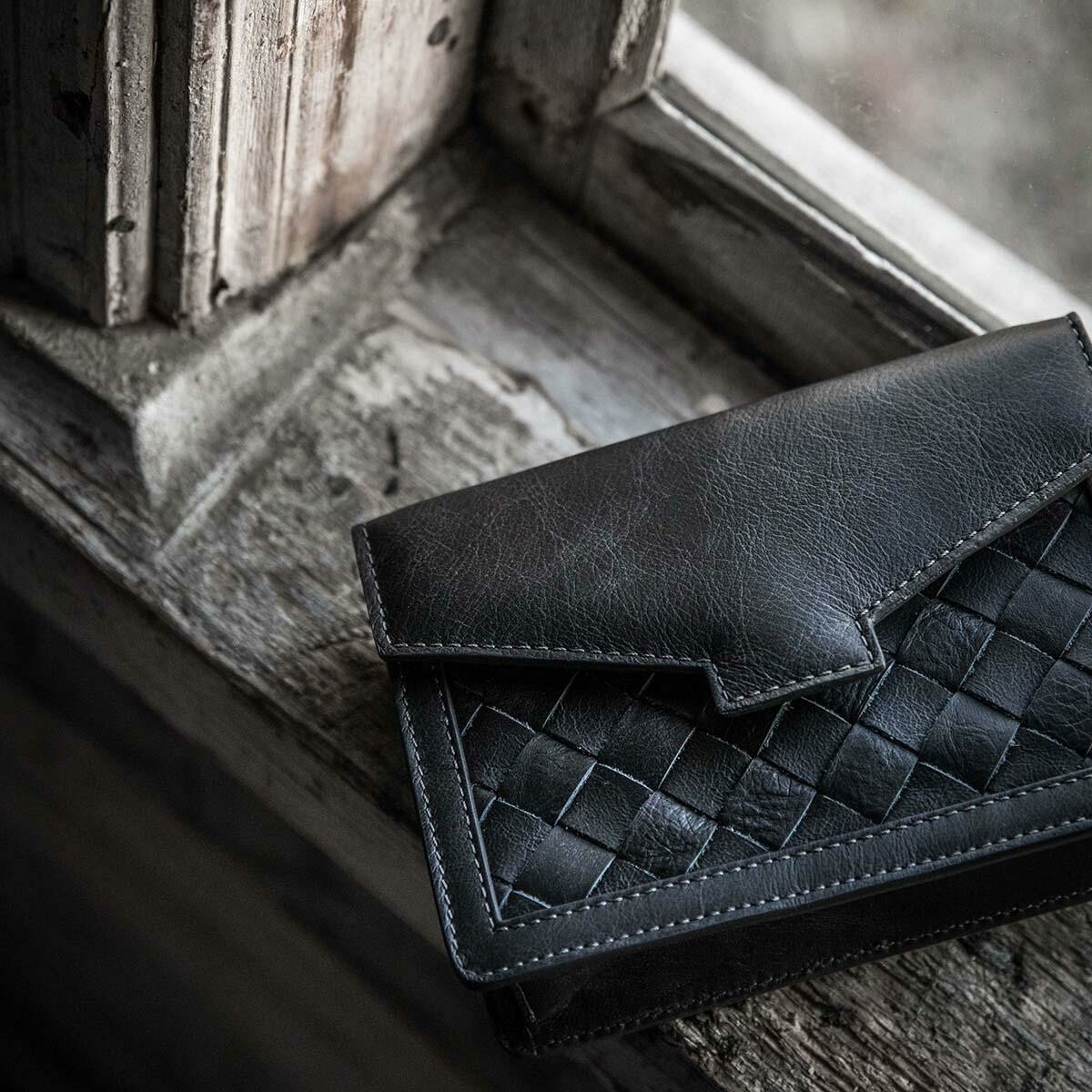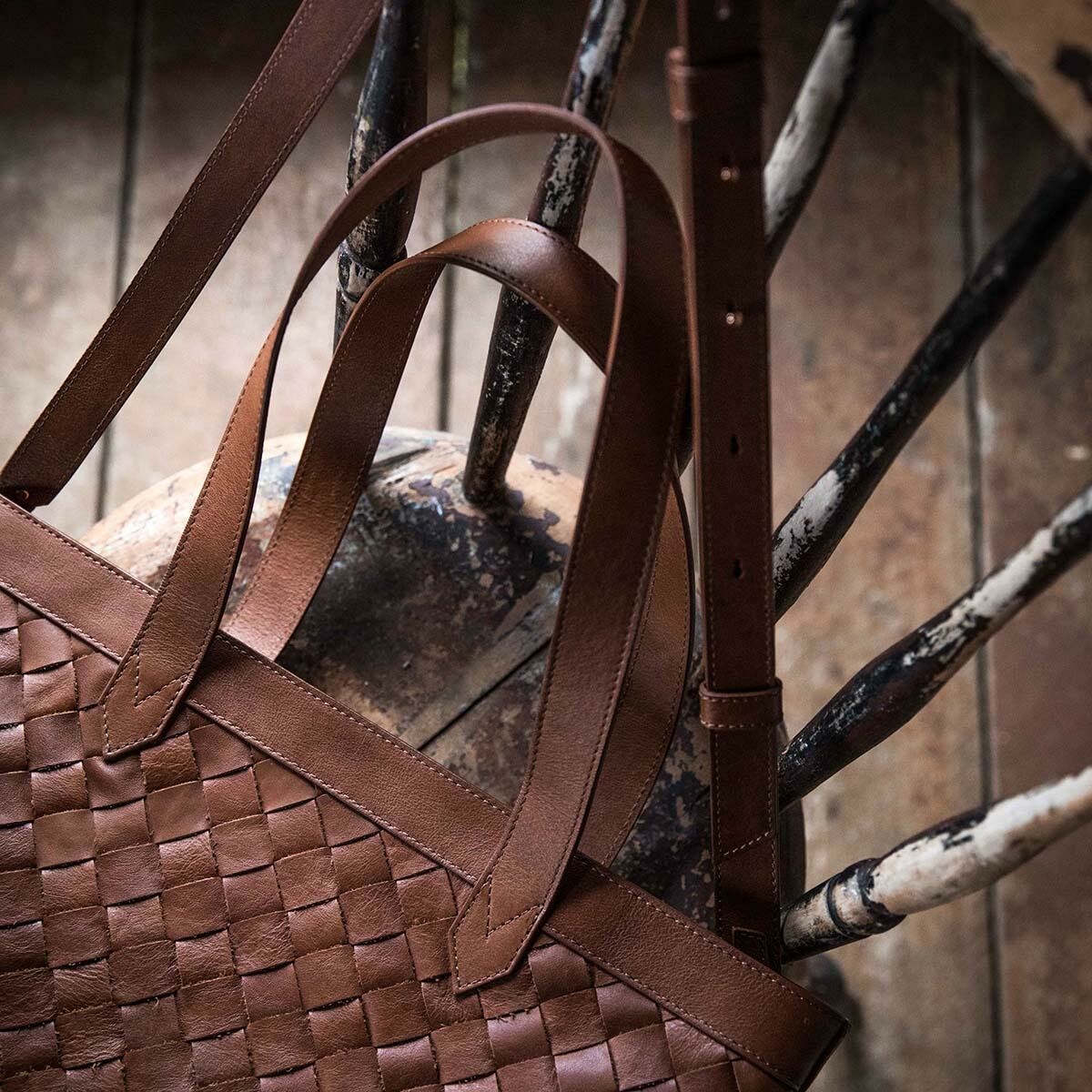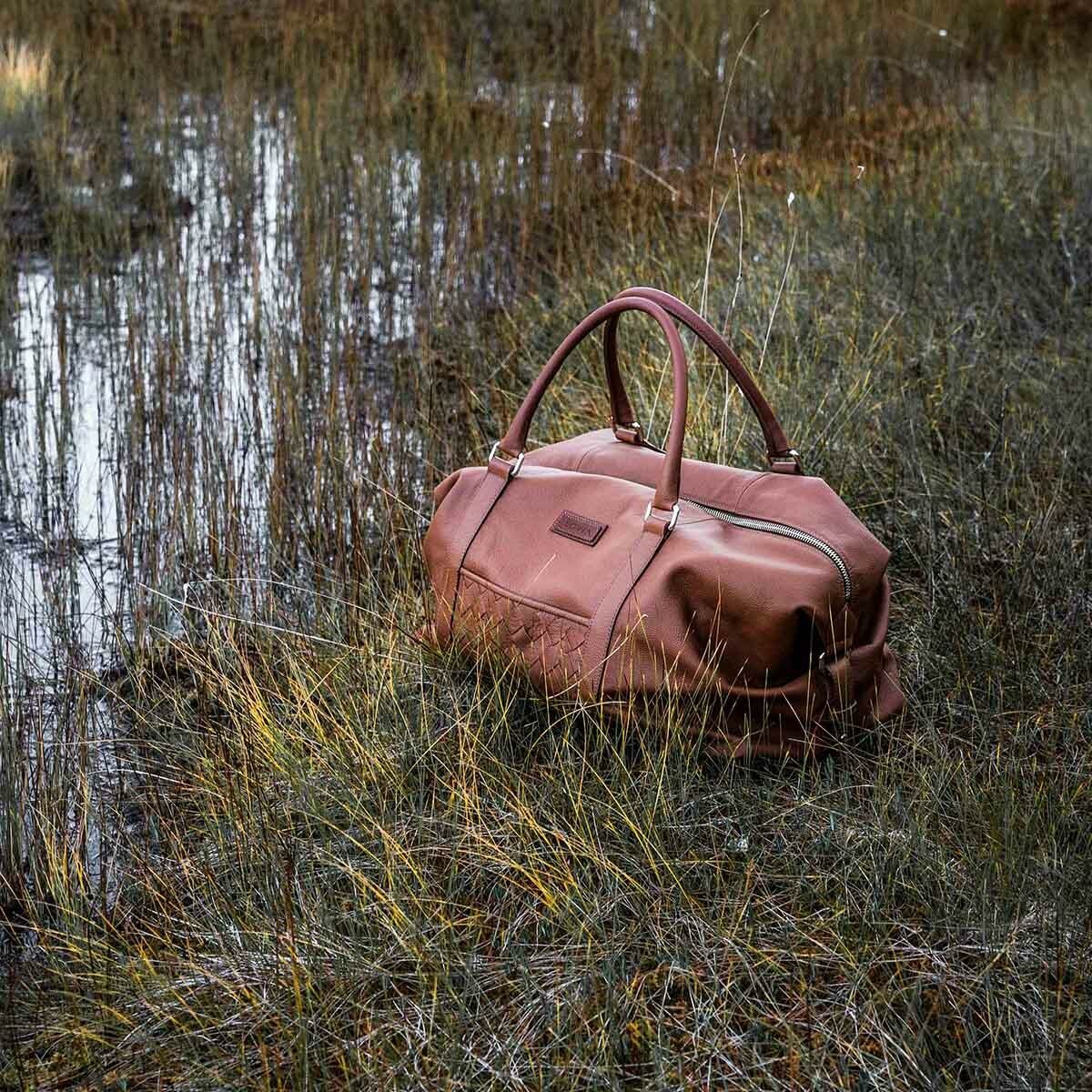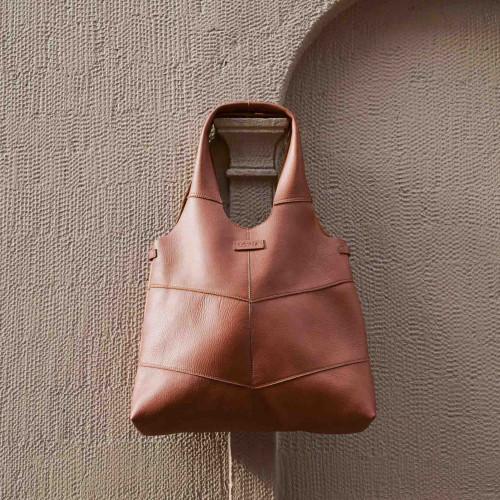SELKA - A NEW LIFE FOR EXCESS MATERIAL
SELKA
Excess leather from furniture production
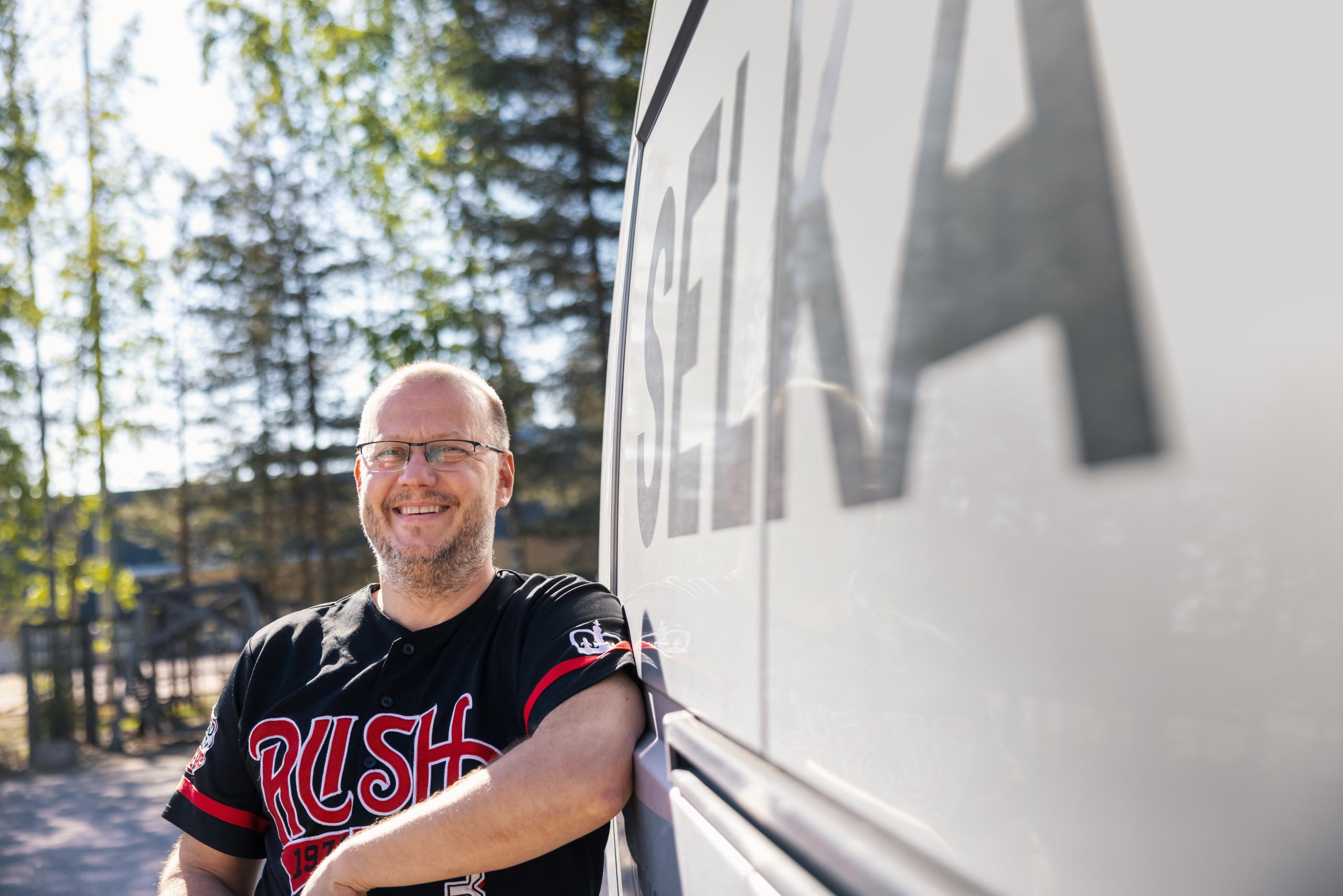
Waste put to use with cooperation
Selka is Lovia's newest material partner, with whom we give new life to the surplus leather of furniture. Selka's story began in the 1980s in the municipality of Pohja, from where the company later moved in 1987 to its current hometown of Lahti. Since then, they have produced furniture mainly for offices, ships and hotels. Responsibility is reflected in Selka's operations by ensuring the products have as long a lifespan as possible - the goal is for the products to last for decades in use. In the past, surplus leather has been donated to daycare centers and hobbyists, but now Selka's excess materials has been used in Lovia bags in a larger way. The excess material of leather products created in Selka's projects has been collected and will be turned into Lovia bags in the future.
EST. 2019
EMPLOYEES: 13
LOCATION: LAHTI, SUOMI
How does furniture leather turn into durable bags?
You might be wondering how on earth furniture leather and bags are related. We want to openly tell the backgrounds of the materials we use, so that you get a true understanding of the origin of the bags and how it works in practice. Selka manufactures furniture on a project basis, so they typically order the leather in a certain color, which can remain in the warehouse until the need for exactly the same color arises. Skins are always ordered annually, and because of this, it is not always easy to predict the sales in advance. There is a surplus even if they try to order upholstery materials only when needed. The leather used in the furniture is designed to withstand heavy wear and tear, making it a great feature for bags designed to last!
But where does the leather come to the Selka factory in the first place? In its leather products, Selka mostly uses cowhide from Elmo Leather, which mainly comes from the Nordic countries. The material is tanned into leather in southern Sweden. Tanning is the working step of leather processing, the purpose of which is to make the hide durable, malleable and well-preserved. When the furniture is upholstered, the excess skins are collected and sent to us in Helsinki, where they are sorted and checked for further use. Next, this surplus material ends up on the desk of our designer Outi, where the pieces of leather are transformed into sketches of new designs.
Greetings from the Lahti factory
We want to give our partners a chance to have their voice heard because without them the actual utilisation of the trash material would not become reality. Here we gathered greetings, bits and pieces from everyday life at Selka.
"Our collection has been extensively updated over the past few years and we noticed that almost all upholstered furniture is made to measure, project-specific. Because of this, it no longer makes sense to store upholstery materials. This is why we order the materials per project, according to the customer's needs. We are happy to cooperate with Lovia because we get space in our warehouse, without having to throw away valuable leather. We are looking forward to what kind of creations Lovia will create from leather."
-Laura Mustonen, marketing, Selka
We do a lot of good but nowhere near perfect
Our cooperation with Selka reduces the environmental burden compared to producing bags only from leather made for leather industry. However, there is always room for improvement, especially when talking about responsibility and developing cooperation further.
We receive as many pieces of leather, of different sizes and colors for further use, as possible, but there are still small pieces and leather scraps left over from sofa production, which we cannot utilize. In the future, we want to make a sort of kibble from this resource, which will serve as a raw material for a new recycled material. We could use this material again in the production of our new bags.
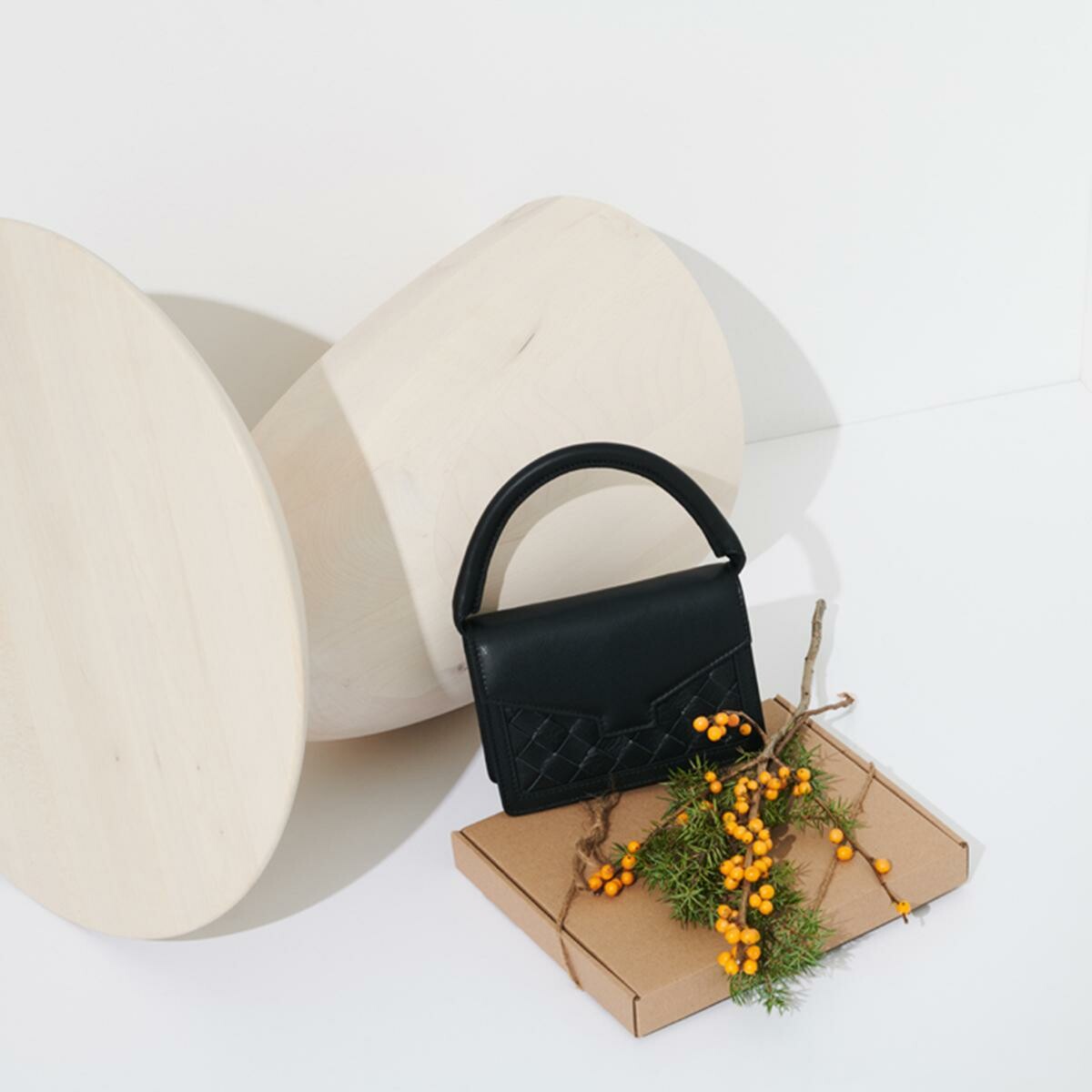
SELKA
Excess leather from furniture production

Waste put to use with cooperation
Selka is Lovia's newest material partner, with whom we give new life to the surplus leather of furniture. Selka's story began in the 1980s in the municipality of Pohja, from where the company later moved in 1987 to its current hometown of Lahti. Since then, they have produced furniture mainly for offices, ships and hotels. Responsibility is reflected in Selka's operations by ensuring the products have as long a lifespan as possible - the goal is for the products to last for decades in use. In the past, surplus leather has been donated to daycare centers and hobbyists, but now Selka's excess materials has been used in Lovia bags in a larger way. The excess material of leather products created in Selka's projects has been collected and will be turned into Lovia bags in the future.
EST. 2019
ESPLOYEES: 13
LOCATION: LAHTI, SUOMI
How does furniture leather turn into durable bags?
You might be wondering how on earth furniture leather and bags are related. We want to openly tell the backgrounds of the materials we use, so that you get a true understanding of the origin of the bags and how it works in practice. Selka manufactures furniture on a project basis, so they typically order the leather in a certain color, which can remain in the warehouse until the need for exactly the same color arises. Skins are always ordered annually, and because of this, it is not always easy to predict the sales in advance. There is a surplus even if they try to order upholstery materials only when needed. The leather used in the furniture is designed to withstand heavy wear and tear, making it a great feature for bags designed to last!
But where does the leather come to the Selka factory in the first place? In its leather products, Selka mostly uses cowhide from Elmo Leather, which mainly comes from the Nordic countries. The material is tanned into leather in southern Sweden. Tanning is the working step of leather processing, the purpose of which is to make the hide durable, malleable and well-preserved. When the furniture is upholstered, the excess skins are collected and sent to us in Helsinki, where they are sorted and checked for further use. Next, this surplus material ends up on the desk of our designer Outi, where the pieces of leather are transformed into sketches of new designs.
Greetings from the Lahti factory
We want to give our partners a chance to have their voice heard because without them the actual utilisation of the trash material would not become reality. Here we gathered greetings, bits and pieces from everyday life at Selka.
"Our collection has been extensively updated over the past few years and we noticed that almost all upholstered furniture is made to measure, project-specific. Because of this, it no longer makes sense to store upholstery materials, but we order the materials per project, according to the customer's needs. We are happy to cooperate with Lovia because we get space in our warehouse, without having to throw away valuable leather. We are looking forward to what kind of creations Lovia will create from leather."
-Laura Mustonen, marketing, Selka
We do a lot of good but nowhere near perfect
Our cooperation with Selka reduces the environmental burden compared to producing bags only from leather made for leather industry. However, there is always room for improvement, especially when talking about responsibility and developing cooperation further.
We receive as many pieces of leather, of different sizes and colors for further use, as possible, but there are still small pieces and leather scraps left over from sofa production, which we cannot utilize. In the future, we want to make a sort of kibble from this resource, which will serve as a raw material for a new recycled material. We could use this material again in the production of our new bags.

